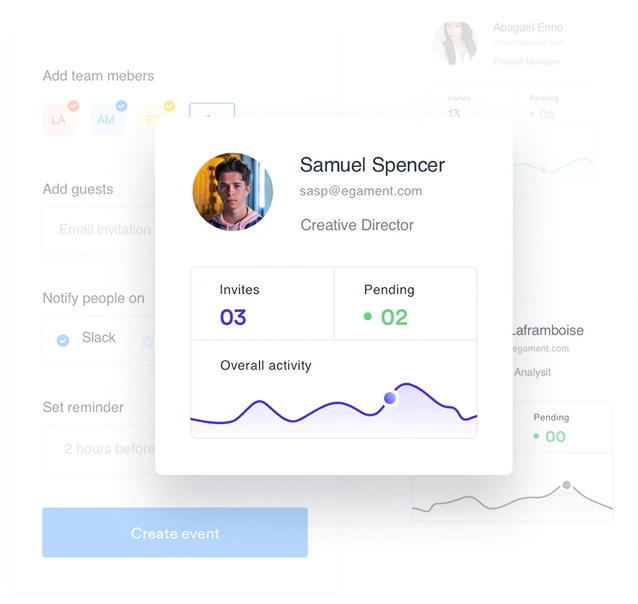Inefficient administrative processes are a silent drain on higher education budgets. According to the National Association of College and University Business Officers, institutions lose an average of 23% of their operational budget annually—amounting to nearly $2.4 billion collectively—on redundant tasks that could be streamlined through better technology integration.
Across campuses worldwide, disconnected systems, manual workflows, and outdated processes create bottlenecks that frustrate students, slow down staff, and hinder institutional growth. Departments operate in silos, data is duplicated across multiple platforms, and critical information often takes too long to access—impacting everything from enrollment to financial aid disbursement.
This doesn’t have to be the reality. Student Information Systems (SIS) have become the backbone of institutional efficiency, transforming the way institutions manage their most essential operations.
In this blog, we’ll explore seven game-changing ways SIS technology is revolutionizing higher education.
The enrollment process represents the first impression students have of institutional efficiency. Traditional paper-based registration creates bottlenecks that frustrate students and strain administrative resources.
Modern SIS platforms eliminate these pain points by providing intuitive online portals where students can browse course catalogs, check prerequisites, and register for classes in real-time. For instance, when students attempt to enroll in conflicting time slots, the system immediately flags the issue, preventing scheduling errors that previously required manual intervention.
Moreover, integrated waitlist management automatically notifies students when spots become available, reducing the back-and-forth communication that traditionally consumed staff time. This automation doesn’t just improve student experience—it frees up valuable staff hours for more strategic initiatives.
Academic record-keeping forms the foundation of institutional credibility, yet manual processes introduce significant risks. Research from EDUCAUSE indicates that universities using paper-based transcript management experience 15% more errors compared to those with integrated SIS platforms.
Digital academic record management ensures real-time updates across all departments. When a professor submits grades, they instantly reflect in student portals, transcript systems, and academic standing calculations. This immediate synchronization eliminates the delays that once left students waiting weeks for grade confirmations.
Instead of scheduling appointments with academic advisors to review transcripts manually, students can access personalized dashboards showing completed coursework and remaining requirements.
Universities are complex ecosystems where seamless communication determines operational success. Traditional communication methods—emails, phone calls, and paper memos—often create information silos that hinder collaboration between departments.
SIS platforms serve as centralized communication hubs, enabling real-time information sharing across academic and administrative units. When the admissions office updates a student’s status, relevant departments—financial aid, housing, academic advising—receive automatic notifications, ensuring everyone works with current information.
In contrast to fragmented communication systems, integrated messaging features allow students, faculty, and staff to communicate within secure, organized channels. This approach not only improves response times but also creates audit trails that enhance accountability and transparency.
Faculty management extends far beyond hiring and payroll. Institutions must coordinate teaching assignments, track professional development, manage research activities, and ensure compliance with accreditation requirements.
SIS platforms centralize faculty information, making it easier to match instructor expertise with course requirements. Automated scheduling features prevent conflicts and optimize classroom utilization, while integrated performance tracking helps identify professional development needs.
Additionally, self-service portals empower faculty members to update personal information, submit time-off requests, and access important documents without administrative intervention. This autonomy reduces staff workload while giving faculty greater control over their information.
Data-driven decision making has become essential for institutional success, yet many institutions/universities struggle with fragmented data sources that make comprehensive analysis challenging.
Modern SIS platforms aggregate data from multiple touchpoints, creating comprehensive dashboards that provide insights into student performance, enrollment trends, and resource utilization. For example, predictive analytics can identify students at risk of dropping out, enabling proactive intervention strategies.
However, the real power lies in real-time reporting capabilities. Instead of waiting for semester-end reports, administrators can monitor key performance indicators continuously, making timely adjustments that improve outcomes. This agility proves particularly valuable during challenging periods.
University financial management involves complex processes—tuition billing, financial aid disbursement, budget tracking, and compliance reporting. Manual financial processes not only consume significant staff time but also increase the risk of errors that can impact both institutional finances and student success.
Integrated SIS platforms automate these critical functions, from generating accurate bills based on enrollment status to processing financial aid according to eligibility criteria. Automated payment processing reduces administrative overhead while providing students with convenient payment options.
Therefore, real-time financial reporting helps administrators monitor budget performance and identify potential issues before they become serious problems. This proactive approach to financial management strengthens institutional stability and supports long-term planning initiatives.
Higher education institutions face increasingly complex regulatory requirements, from FERPA privacy protections to Title IX compliance reporting. Manual compliance management creates significant risks and requires substantial staff resources.
SIS platforms incorporate built-in compliance features that automate many regulatory requirements. For instance, automated privacy controls ensure that sensitive student information is only accessible to authorized personnel, while audit trails provide the documentation necessary for compliance reviews.
Moreover, centralized security management reduces vulnerability to data breaches that could compromise student privacy and institutional reputation. Regular security updates and encrypted data transmission protect against evolving cyber threats that target educational institutions.
The seven operational improvements highlighted above demonstrate how Student Information Systems serve as catalysts for institutional transformation. By eliminating manual processes, reducing errors, and enabling data-driven decision making, SIS platforms help universities redirect resources from administrative tasks toward their core educational mission.
The benefits extend beyond operational efficiency to encompass improved student satisfaction, enhanced faculty productivity, and stronger institutional performance. Universities that embrace integrated SIS solutions position themselves to navigate future challenges while delivering exceptional educational experiences.
Final Words-
However, successful SIS implementation requires careful planning, stakeholder engagement, and ongoing support. The right technology partner can make the difference between a transformative implementation and a costly disruption.
Ready to discover how a modern SIS can revolutionize your institution’s operations? Book a personalized demo today to see how our comprehensive education ERP solution addresses your specific challenges and unlocks your university’s full potential.
Follow the link: https://www.academiaerp.com/contact/

Experience Academia – Your partner in transforming campus operations, a trusted all-in-one ERP/SIS solution.
Get the latest insights, trends, and updates delivered straight to your inbox!
